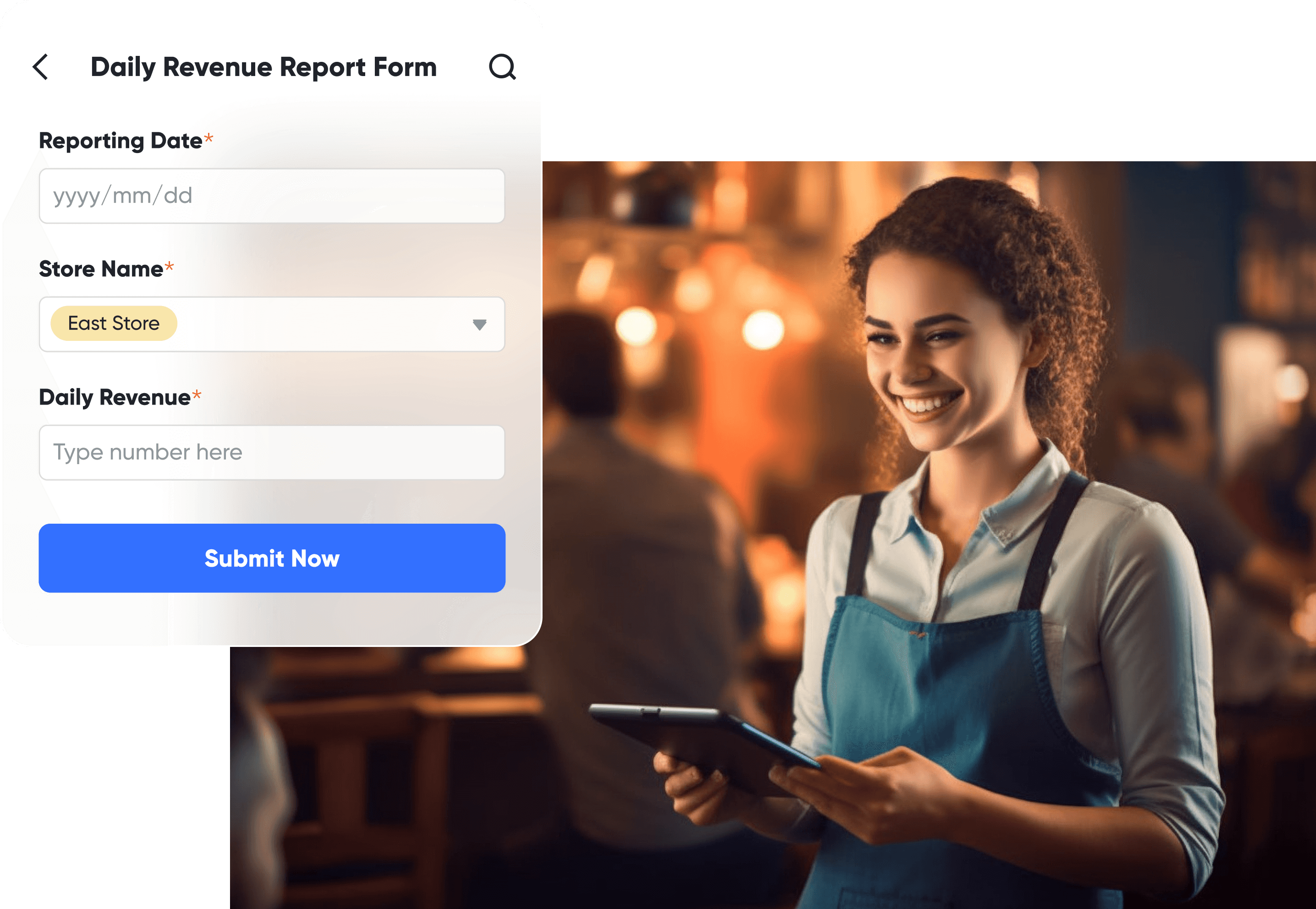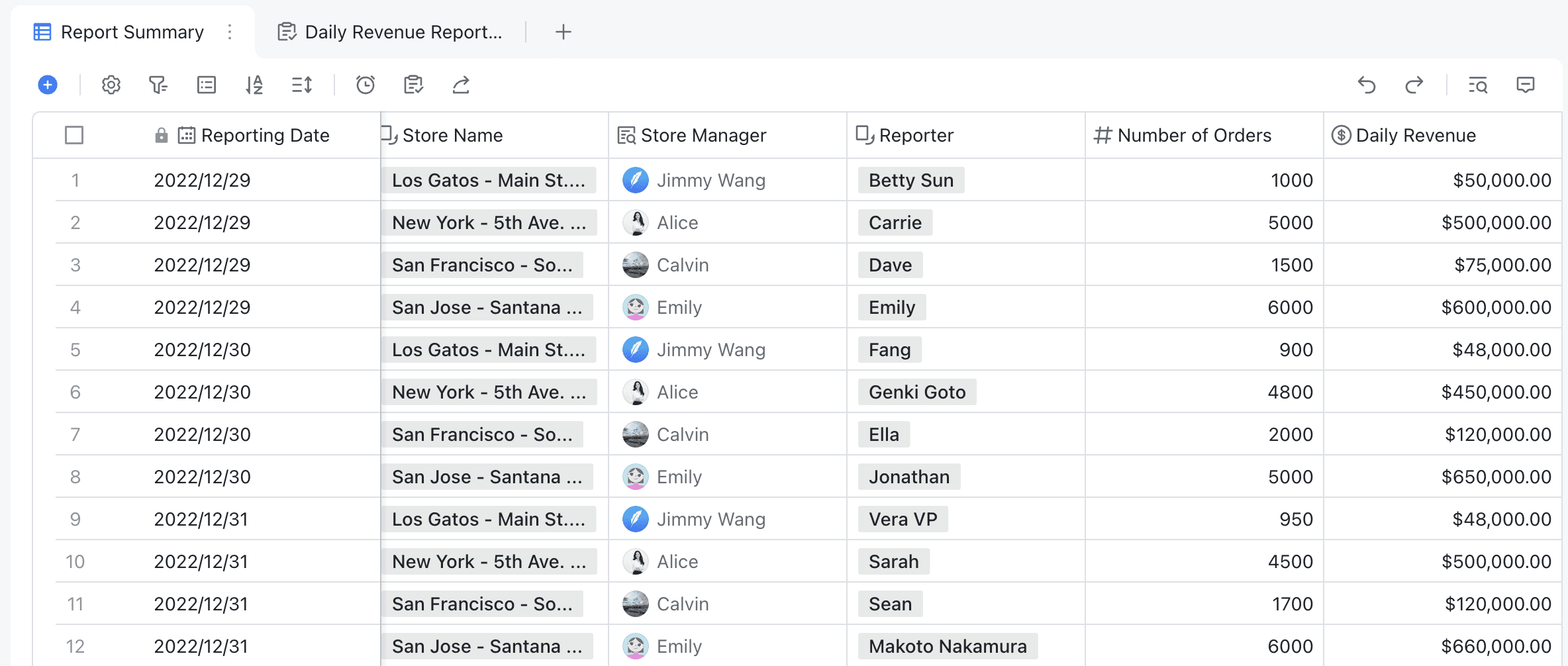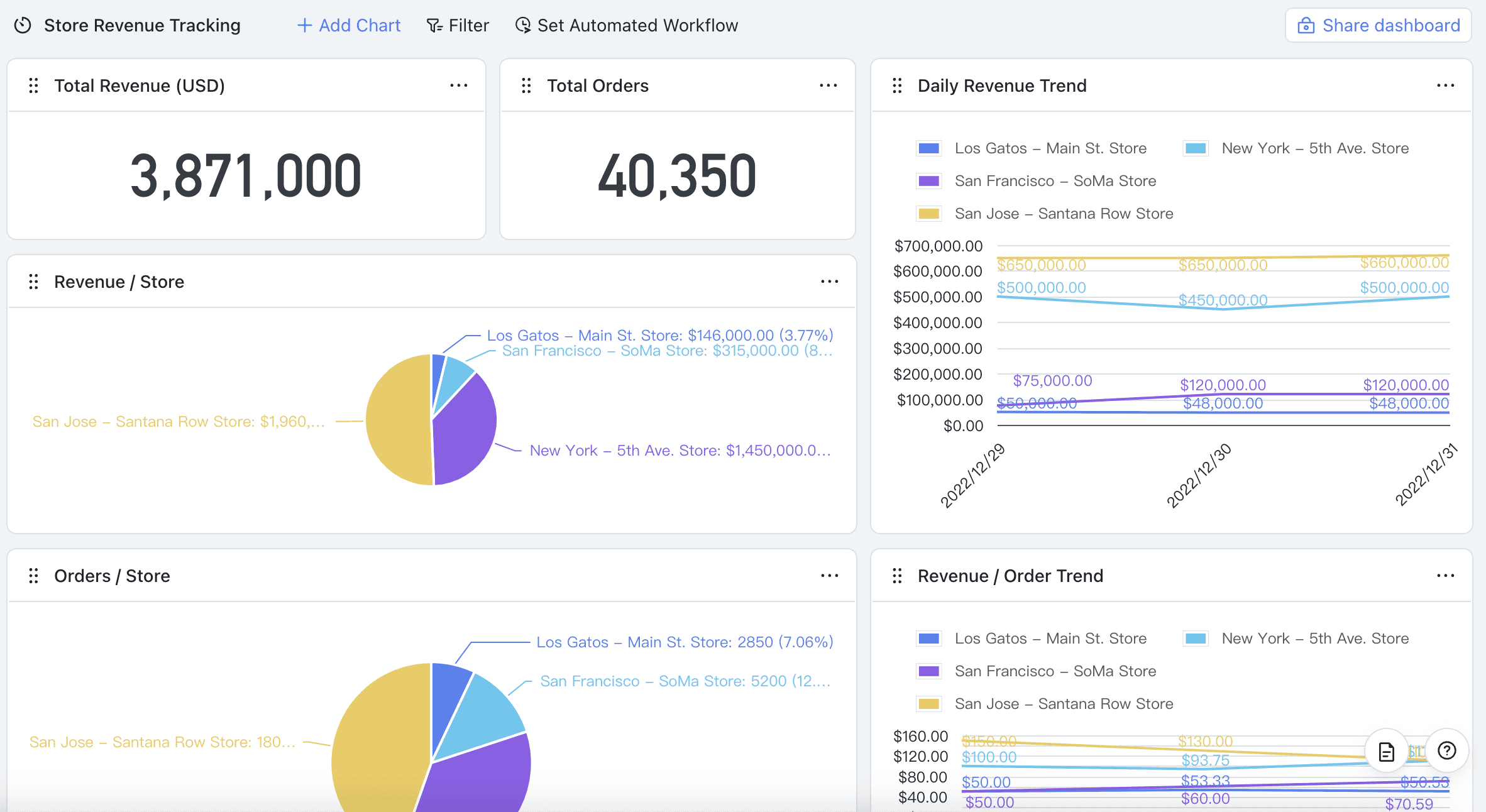Without access to real-time revenue, profitability, and workforce metrics, restaurant owners and CEOs find it near impossible to navigate the market's challenges effectively and make strategic choices. In fact, 45% of owners feel that they are unable to analyze their data effectively and the lack of access towards real-time revenue visibility can result in a 29% lower year-over-year revenue growth.
In this blog post, we'll explore the importance of digitizing revenue management for your retail business and how it can boost your storefront success by up to 30% in daily revenue. As a bonus, we'll provide you with a free Lark revenue tracking template to help you out (so keep reading!).
Daily sales tracking template: what to consider
Although regular Excel sheets reports might have served you well in the past, they take too much time to complete, are only updated weekly or monthly, and are prone to errors, preventing owners from making informed operational, staffing, or budgeting decisions efficiently.
1. Make daily sales tracking easier for your team.
Instead of manual revenue inputs into Excel sales tracking templates, we recommend getting a mobile-friendly sales tracking form to ease the daily revenue data reporting. Easily collect a store's daily revenue reports via a user-friendly form. Employees can simply scan a QR code and report the store's order numbers and daily revenue. Base will automatically calculate and update the new submission results onto the revenue dashboard within seconds. Plus, save even more time when on-the-go by quickly accessing all of this information on your phone just within a few taps.

2. Move from multiple sales tracking spreadsheets to a unified database.
Running a brick-and-mortar business involves manually managing multiple revenue streams, which can be a daunting task when information is scattered. Having no unified source of truth for informed decisions results in inefficiencies, errors, risking wrong business directions.
Whether it's various storefronts or sources like tips or cash, combine multiple revenue streams and stores into one dashboard and keep track of all of them in real-time. Plus, with point-of-sale (POS) integration, your business can seamlessly integrate your POS system to generate order reports and sales data for each store. See everything in one place to evaluate overall revenue performance across all locations and drive informed decision-making.

3. Visualize revenue trends and gain insights with no waiting time.
When tracking revenue on pen-and-paper or spreadsheets, it's challenging to visualize complex revenue trends in a simple manner due to manual data manipulation and limited analytical capabilities.
However, it's essential for store owners to quickly see revenue performance in an easy-to-digest manner so they can spend less time manually analyzing and more time focusing on crafting key business decisions.
Once store employees submit the daily revenue report form, you should consider using a solution that can automatically update pies and tables to reflect the most up-to-date data across all storefronts. By tracking multiple locations with visualization charts, you can pinpoint patterns, weak spots, and correlation in store and revenue performance.

Conclusion
In conclusion, as the owner or CEO of a retail business, you bear the responsibility of steering your business towards success. Digitizing revenue tracking into one dashboard allows you to access real-time revenue data, make informed decisions, and mitigate risks, eliminating guesswork and ensuring your business thrives. Try it out with our free Base template.
Need help? Contact our sales team today.















